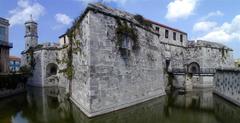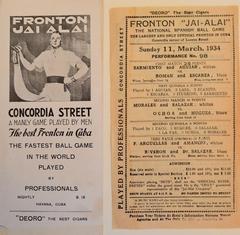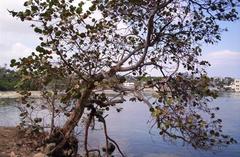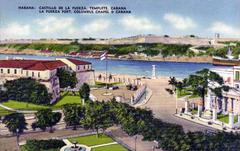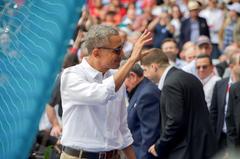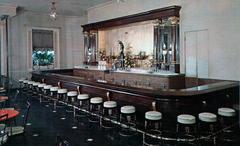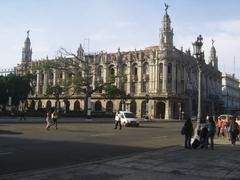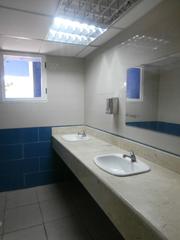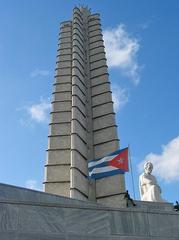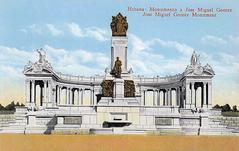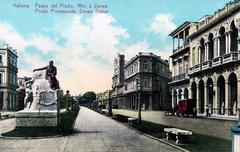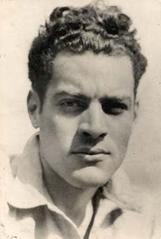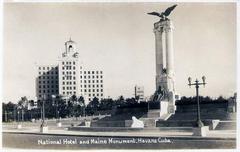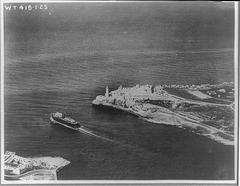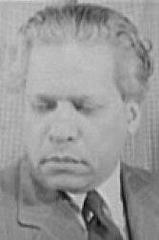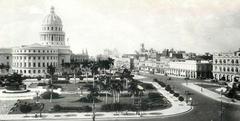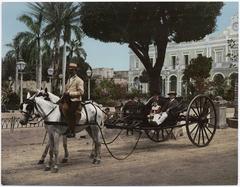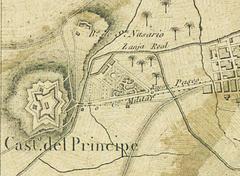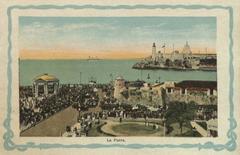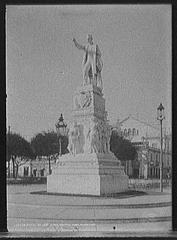Museo Postal Cubano: Visiting Hours, Tickets, and Comprehensive Guide to Havana’s Historic Postal Museum
Date: 14/06/2025
Introduction: Discovering Cuba’s Postal Heritage
Nestled in the heart of Havana, the Museo Postal Cubano “José Luis Guerra Aguiar” stands as a vibrant testament to Cuba’s rich history of communication and philately. Officially inaugurated in 1965 after decades of dedicated advocacy and cultural effort, the museum is housed within an elegant neoclassical building adjacent to Plaza de la Revolución. Here, visitors can explore the evolution of postal services from colonial times through revolutionary transformations to the present day. Whether you’re a philatelist, history enthusiast, or curious traveler, the Museo Postal Cubano offers an immersive experience that bridges history, technology, and Cuban identity (Havana History Heritage Society, Radio Rebelde, lahabana.gob.cu).
Table of Contents
- Introduction
- Historical Background
- Collections and Exhibitions
- Museum Architecture and Location
- Visitor Information
- Educational Role and Community Engagement
- FAQ
- Plan Your Visit
- References
Historical Background of Museo Postal Cubano
Origins and Institutional Development
The idea for a Cuban postal museum originated as early as 1939, when the Secretaría de Comunicaciones first proposed its creation. After an unsuccessful attempt in 1955, the Museo Postal Cubano was officially established on January 2, 1965, following the Cuban Revolution (Radio Rebelde). In 1991, it was named in honor of its influential director, José Luis Guerra Aguiar (es.wikipedia.org). The museum’s founding underscores the national commitment to preserving and documenting Cuba’s communication legacy.
Significance in Cuban Heritage
The museum documents Cuba’s role as a communication hub, tracing the postal service’s origins to the 18th century when Spanish colonial authorities established the first mail routes. The introduction of postage stamps in 1855 positioned Cuba among the earliest adopters in Latin America. Through the colonial era, independence struggles, U.S. intervention, the republic, and the revolutionary period, the postal system has been both a logistical lifeline and a vehicle for national identity. The Museo Postal Cubano curates this evolution, presenting not only artifacts but also the broader social and political narratives entwined with Cuba’s postal history (lahabana.gob.cu, es.wikipedia.org).
Collections and Exhibitions
Key Halls and Highlights
The museum features three main exhibition halls, each offering a distinct perspective on postal history and philately (ecured.cu):
1. Sala Principal (Main Hall)
- Universal Postal History: Showcases ancient writing tools, waxed wooden boards, cuneiform reproductions, and the evolution of written correspondence.
- Iconic Artifacts: The “Penny Black” (the world’s first adhesive postage stamp, issued in 1840), and the account book of Cuba’s first postmaster, José Antonio de Armona y Murga, from 1765.
2. Sala “Cuba”
- Cuban Postal Heritage: Opened in 1985, this hall displays over 300 panels covering Cuban stamps and mail history from colonial times to the Revolution.
- Historical Letters: Features circulated letters from as early as 1760, including correspondence from national heroes and major historical periods (colonial, U.S. intervention, republican, and revolutionary eras).
3. Sala Transitoria (Temporary Hall)
- Rotating Exhibitions: Hosts special thematic displays, private collections, and the “Exhibit of the Month,” highlighting notable events or rare philatelic items.
Unique Artifacts
- Cohete Postal Cubano (Cuban Postal Rocket): An experimental rocket mail project from 1939, commemorated by a unique stamp series (Radio Rebelde, es.wikipedia.org).
- Revolutionary Memorabilia: The first revolutionary-era stamp sheet and printing plates (post-1959), plus memorabilia from Cuba’s joint space mission with the USSR (1980).
- Historical Letters and Documents: Letters from José Martí, personal seals of independence leaders, and records from early postmasters.
- International Philately: Stamps and panels from around the globe, reflecting Cuba’s integration into the Universal Postal Union and worldwide communication networks.
Museum Architecture and Location
The Museo Postal Cubano occupies the ground floor of the Ministry of Informatics and Communications, a neoclassical structure in Havana’s Vedado district, near Plaza de la Revolución (lahabana.gob.cu). The architectural features—high ceilings, ornate columns, and spacious halls—create a dignified setting, while its central location places it within easy reach of major Havana landmarks (lonelyplanet.com).
Visitor Information
Visiting Hours & Tickets
- General Schedule: Monday to Friday, 9:00 AM – 5:00 PM (closed weekends and public holidays; hours may vary, confirm locally or call ahead).
- Admission: Free or low-cost, making it accessible to all visitors (whichmuseum.com).
Accessibility & Directions
- Location: Ground floor, Ministry of Communications, Avenida de la Independencia, Vedado, Havana.
- Getting There: Easily accessible via taxi, public buses, or on foot from Old Havana or Vedado. The museum is wheelchair accessible, with ramps and elevators.
Amenities & Visitor Tips
- Guided Tours: Offered upon request for deeper insights; recommended for non-Spanish speakers.
- Language: Exhibits are primarily in Spanish, but some English explanations are available.
- Photography: Non-flash photography is generally permitted; check with staff for restrictions.
- Gift Shop: Offers stamps, albums, and philatelic souvenirs.
- Time Allocation: Plan for 1–2 hours to fully explore the museum.
- Nearby Landmarks: Plaza de la Revolución, José Martí Memorial, Museo de la Revolución, and the Necrópolis Cristóbal Colón.
Educational Role and Community Engagement
The Museo Postal Cubano serves as both a research center and a hub for philatelic enthusiasts. It offers workshops, lectures, educational programs for school groups, and publishes research on communication history and philately (Radio Rebelde). Community outreach includes partnerships with schools and civic organizations, fostering historical awareness and literacy. Temporary exhibitions and stamp-collecting fairs promote public engagement and intergenerational learning.
Frequently Asked Questions (FAQ)
Q: What are the Museo Postal Cubano’s visiting hours?
A: Monday to Friday, 9:00 AM to 5:00 PM. Closed on weekends and public holidays. Confirm hours locally before your visit.
Q: Is admission free?
A: Yes, general admission is free or low-cost. Special exhibitions or tours may require a nominal fee.
Q: Are guided tours available?
A: Yes, guided tours are available by prior arrangement.
Q: Is the museum wheelchair accessible?
A: Yes, ramps and elevators ensure accessibility for all visitors.
Q: Can I take photos inside?
A: Non-flash photography is generally allowed for personal use; check with staff for specific exhibit restrictions.
Q: Can visitors buy stamps or philatelic materials?
A: Yes, the museum shop offers stamps, albums, and accessories for collectors.
Plan Your Visit
The Museo Postal Cubano invites visitors to explore Cuba’s communication legacy through rare stamps, historical correspondence, and interactive exhibitions. Combine your visit with a tour of nearby Havana landmarks for a deeper cultural experience.
For current information on visiting hours, special events, and guided tours, check the museum’s official website or contact them directly. Download the Audiala app for up-to-date guides, virtual tours, and exclusive content.
References
- Havana History Heritage Society
- Radio Rebelde
- lahabana.gob.cu
- CubaTech Travel
- Ecured
- Wikipedia (ES)
- Lonely Planet
- whichmuseum.com
Suggested visuals:
- Museo Postal Cubano’s neoclassical façade (alt: “Museo Postal Cubano neoclassical building in Havana”)
- Close-ups of rare Cuban stamps, including the 1855 Queen Isabella II series (alt: “Rare 1855 Queen Isabella II Cuban stamps at Museo Postal Cubano”)
- Photos of the Cuban Postal Rocket artifact (alt: “Cuban Postal Rocket artifact at Museo Postal Cubano”)
- Philatelic panels with global stamps (alt: “Philatelic panels showcasing global stamps at Museo Postal Cubano”)
- Museum exhibition rooms (alt: “Postal equipment exhibit inside Museo Postal Cubano”)
- Interactive map of Havana historical sites with the museum highlighted
For directions or virtual tours, please visit the museum’s official site or the Audiala app.

